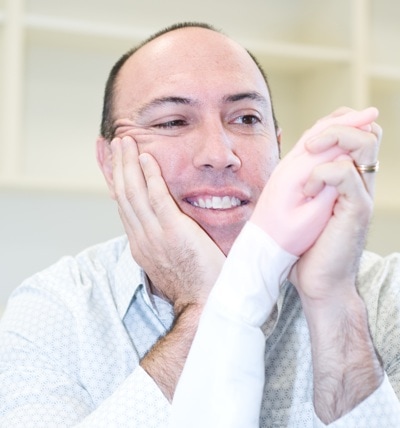I recently received an email from Vanessa Milne who is doing Post Graduate Studies in Pain Science at University of Sydney with the who’s who of Australian pain stuff – Nicholas, Cousins, Siddall, Keast…. an impressive line up that. Anyway, Professor Michael Cousins is leading the way in an impressive and ambitious attempt to put pain on the Australian National Agenda. The cause is The National Pain Strategy and the organisation is painAustralia. Now, I reckon this is a great thing and I think Prof Cousins is doing a superlative job. However, I am not quite on board for one of the driving messages of that campaign – that Chronic pain is a disease in its own right. I think they have got this wrong. I am definitely sympathetic to the sentiment – that there are processes that drive chronic pain and that these processes are not truly damaging in the peripheral body-part kind of way (although see this paper by Hancock et al and our blog on it). Rather, they are changes in structure and function of the nervous system and function (at least) of other efferent systems – endocrine, autonomic etc etc).
My conceptual problem with the idea that these changes are evidence that chronic pain is a disease in its own right is that I don’t think these changes are pain. I think they contribute to pain. I think they are not sufficient to cause pain because if they were, people with chronic pain would never, ever be pain free – not even for a millisecond – and they would never sleep – not even for a millisecond (or can one sleep in pain? I think the answer to that question is ‘almost never’ – that it is very rare to have pain in your sleep – but that is another question altogether). Moreover, everyone with a spinal cord injury would have pain and everyone with a peripheral nerve injury would have pain, because both these situations lead to CNS changes.
Here is the rub – if we are to accept that ACUTE pain is an output that emerges into consciousness when the brain evaluates a body part to be in danger, then I think we must also accept that CHRONIC pain is an output that emerges into consciousness when the brain evaluates a body part to be in danger. I contend that the ‘disease’ actually refers to the contributors to the brain’s evaluation, not the result of the evaluation. So, I reckon that pain is the protective conscious bit that manifests from the ‘disease’. Is this just a semantic issue that we should let lie? I don’t think so, mainly because I think it actually helps propagate the myth that pain is something that exists in the body – that it is an entity in itself. This is, in my view, a problematic myth for several reasons. For example, if pain does in fact exist as an entity in itself, then we should be able to detect it, somehow, some time, when technology permits perhaps. Saying that back pain actually exists in the disc is now sufficiently uncool to be poopoo’d in most circles, but is it all that different to say back pain exists in the dorsal horn of the spinal cord, or in the network of neurons we have come to call, with bravado I might add, the ‘pain matrix’, or in the glial cells that interact with neurones in devastatingly complex ways?
So, while I think the Australian National Pain Strategy is excellent, and while I have the utmost respect for the people driving it and wish to give it my wholehearted support, I don’t think that we are helping to reconceptualise the truly multifactorial, truly biopsychosocial nature of pain, its fundamentally emergent property, the fact that it is a conscious experience, by shifting the culprit tissue from the periphery to the CNS. I do think we should be embracing the contribution to chronic pain of structural and functional changes within our CNS and elsewhere, but to call these pain seems, to me, to be a failure of reasoning. It reminds me a little of my favourite quote from Prof Pat Wall – ‘the mislabeling of nociceptors as pain fibres was not an elegant simplification but a most unfortunate trivialisation’. One might paraphrase that here: ‘the mislabeling of central sensitisation, cortical reorganisation, neuroimmune dysregulation, SNS upregulation and grey matter loss as pain is not an elegant simplification but a most unfortunate trivialisation.’
About Lorimer Moseley
 Lorimer is NHMRC Senior Research Fellow with twenty years clinical experience working with people in pain. After spending some time as a Nuffield Medical Research Fellow at Oxford University he returned to Australia in 2009 to take up an NHMRC Senior Research Fellowship at Neuroscience Research Australia (NeuRA). In 2011, he was appointed Professor of Clinical Neurosciences & the Inaugural Chair in Physiotherapy at the University of South Australia, Adelaide. He runs the Body in Mind research groups. He is the only Clinical Scientist to have knocked over a water tank tower in Outback Australia.
Lorimer is NHMRC Senior Research Fellow with twenty years clinical experience working with people in pain. After spending some time as a Nuffield Medical Research Fellow at Oxford University he returned to Australia in 2009 to take up an NHMRC Senior Research Fellowship at Neuroscience Research Australia (NeuRA). In 2011, he was appointed Professor of Clinical Neurosciences & the Inaugural Chair in Physiotherapy at the University of South Australia, Adelaide. He runs the Body in Mind research groups. He is the only Clinical Scientist to have knocked over a water tank tower in Outback Australia.
Link to Lorimer’s published research here. Downloadable PDFs here.
Reference
 Hancock MJ, Maher CG, Laslett M, Hay E, & Koes B (2011). Discussion paper: what happened to the ‘bio’ in the bio-psycho-social model of low back pain? European spine journal PMID: 21706216
Hancock MJ, Maher CG, Laslett M, Hay E, & Koes B (2011). Discussion paper: what happened to the ‘bio’ in the bio-psycho-social model of low back pain? European spine journal PMID: 21706216



